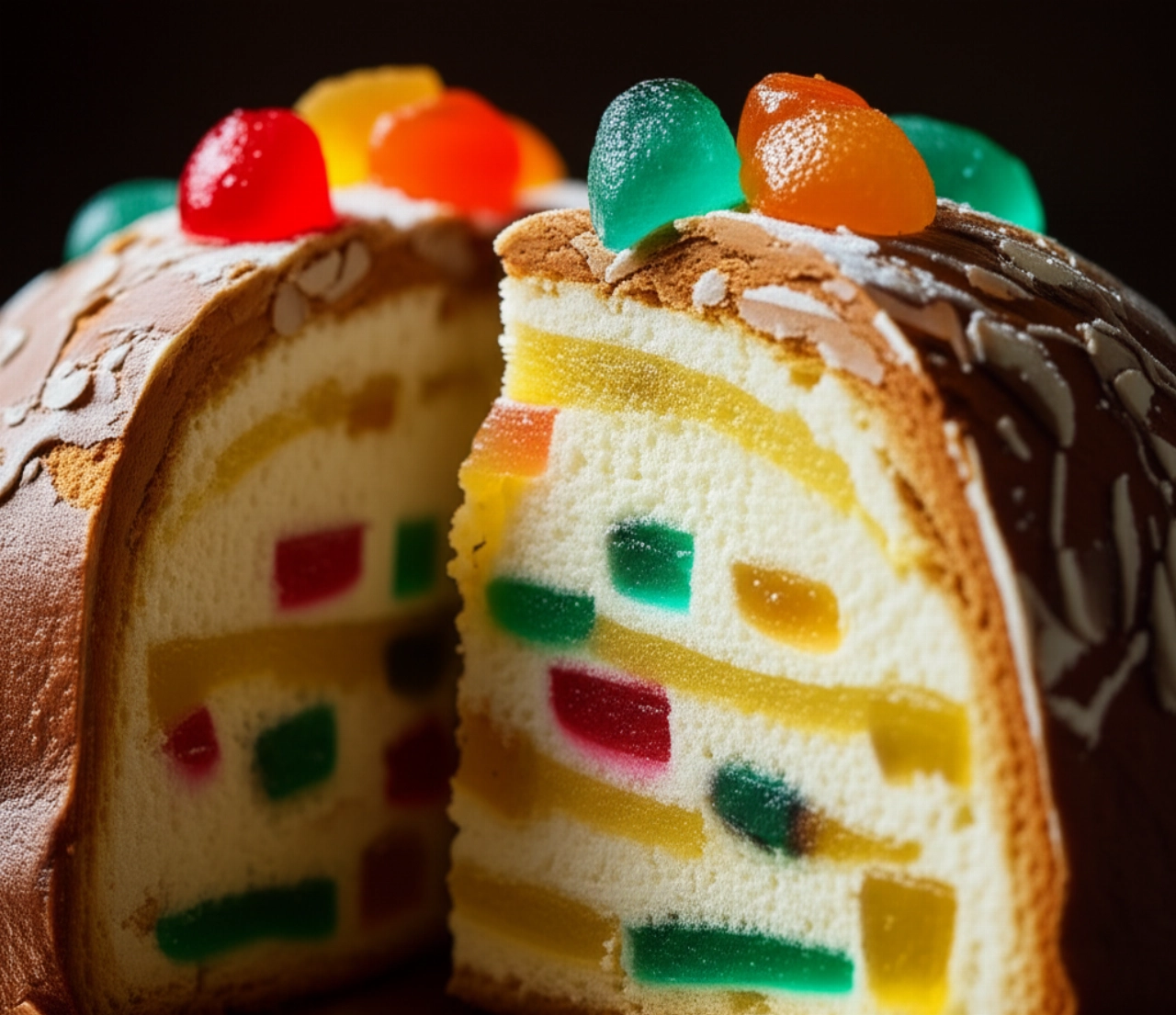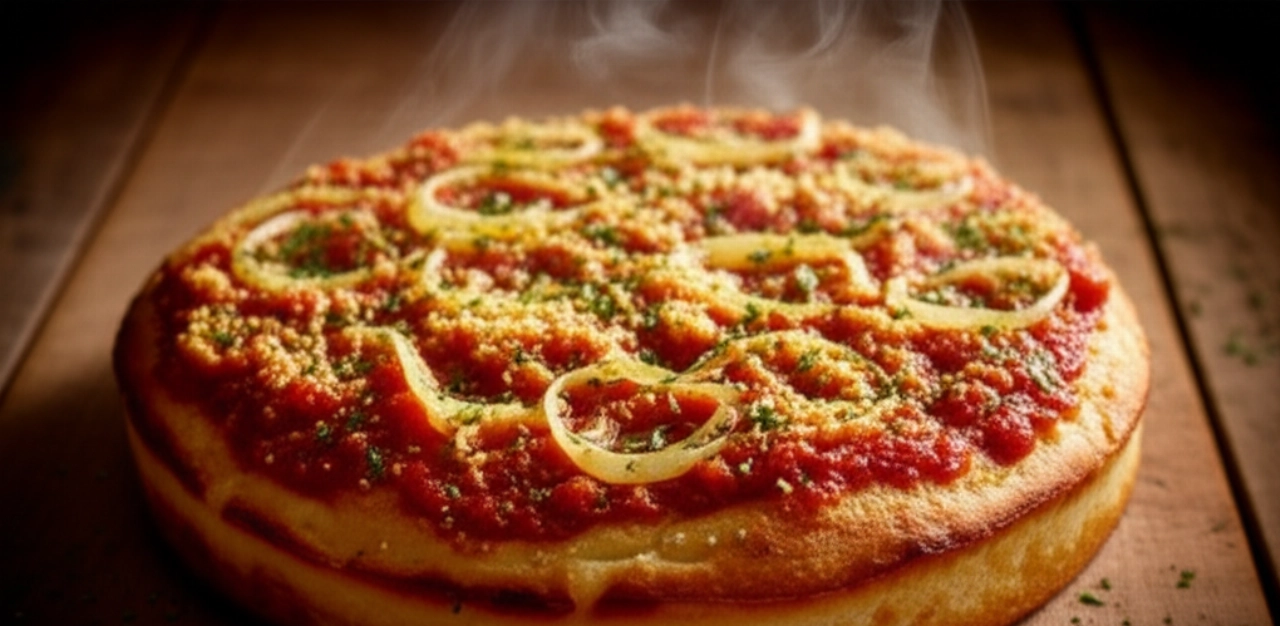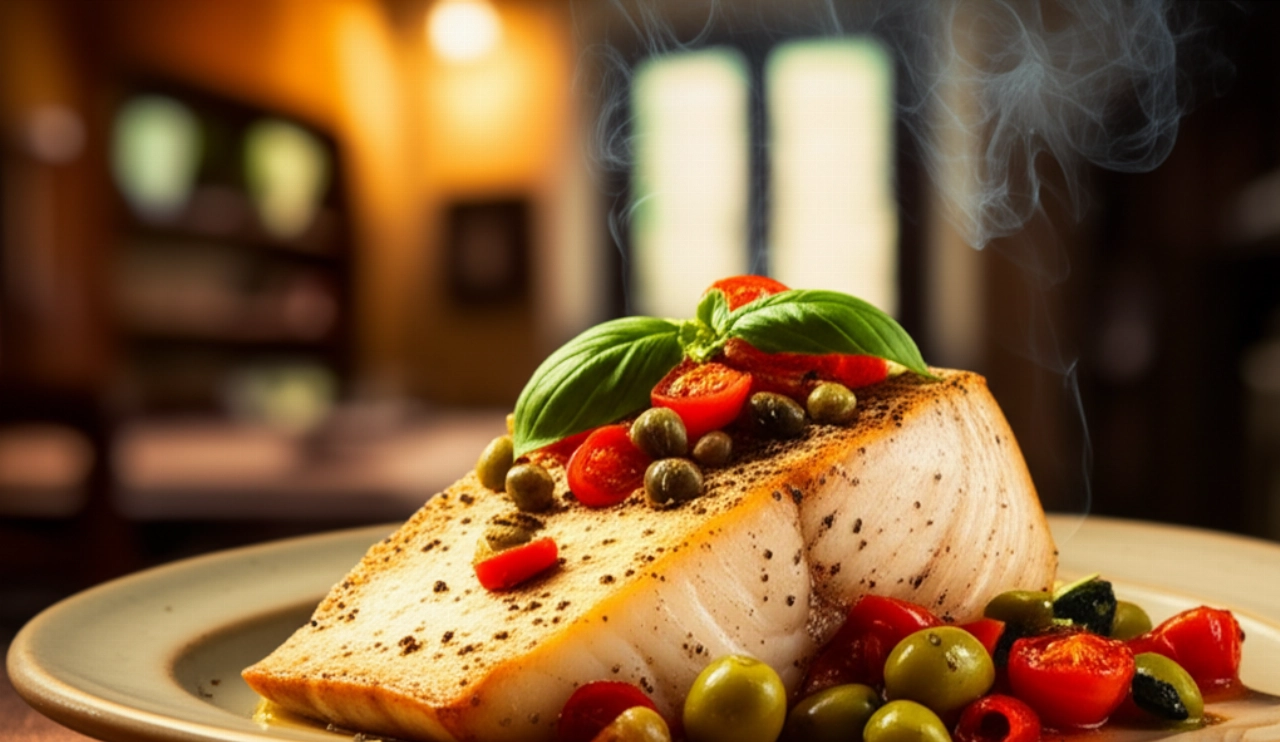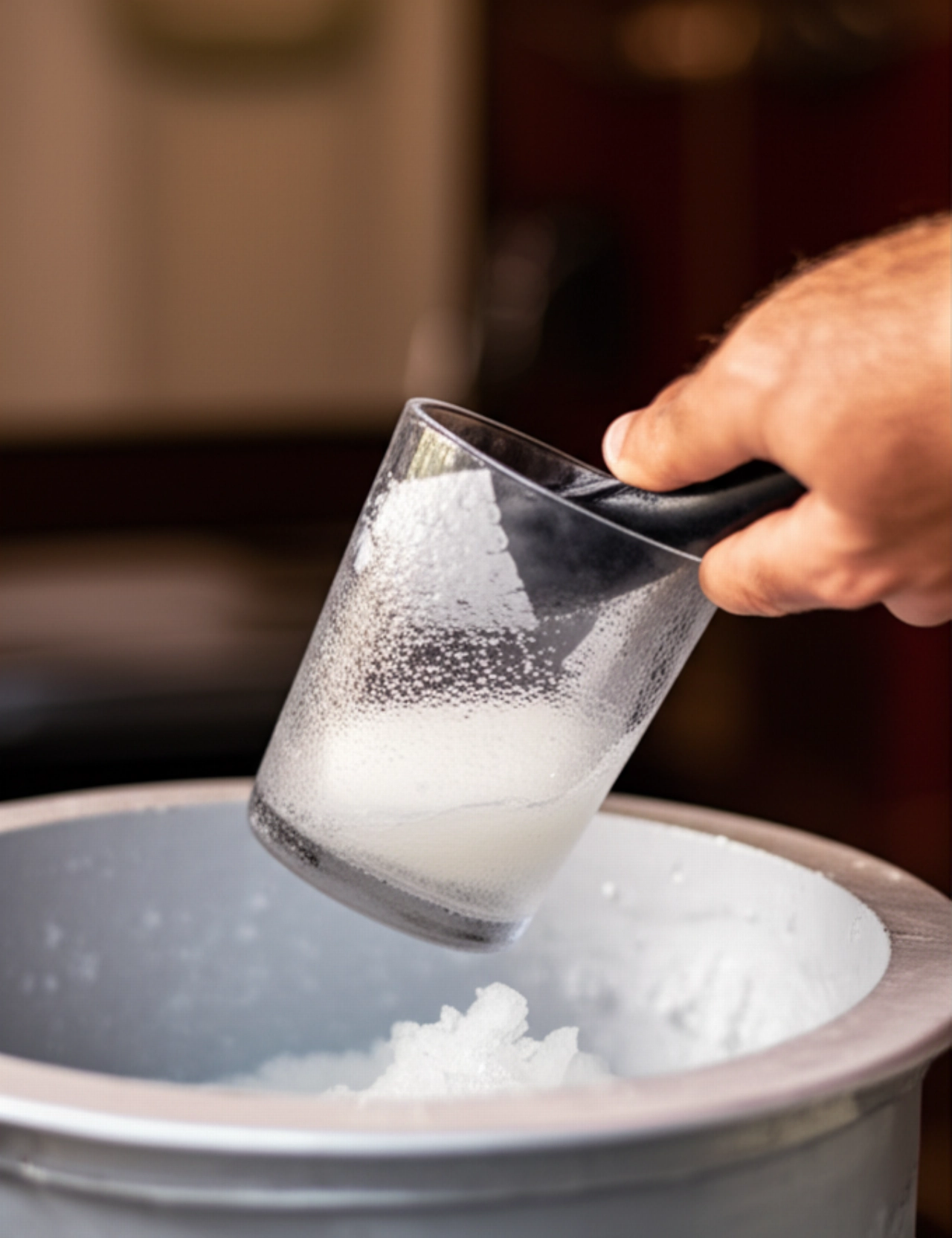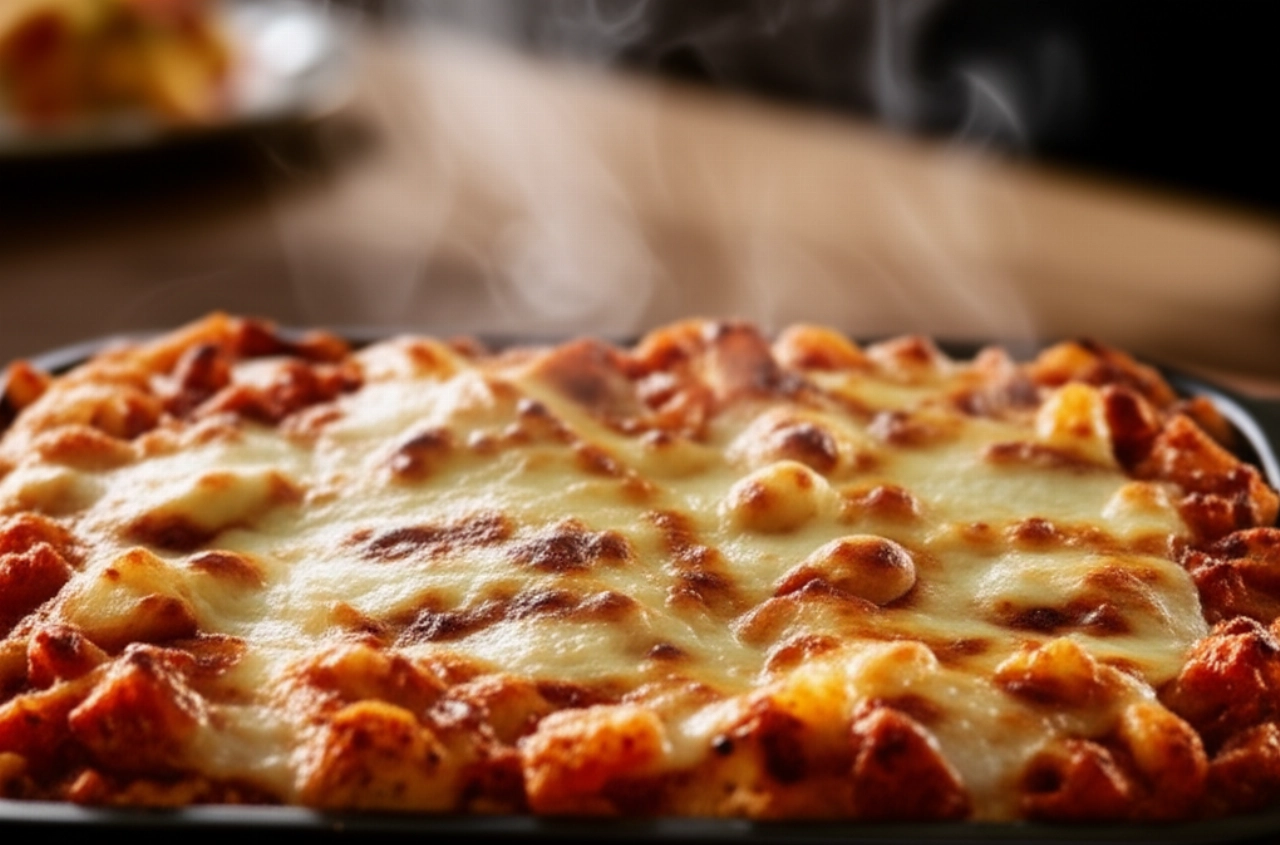There's a scent that smells of home, of celebration, of hugs... the scent of freshly baked Anelletti al Forno. A dish that, in Sicily, is much more than just a first course: it's tradition, it's family, it's the quintessential Sunday lunch.
But let's face it, preparing the perfect Baked Anelletti can seem like a real challenge. Too often the ragù turns out dry, the pasta overcooked, or, even worse, the whole thing falls apart once cut. That golden crust and gooey, stringy heart seem like a mirage, and the fear of wasting ingredients and time is always around the corner.
Don't worry, you're in the right place. Here at Search Recipes, your trusted chef grandma, I'll take you by the hand and reveal all the secrets to preparing Palermitan Baked Anelletti so good you'll feel like you're in Sicily. Forget performance anxiety: with this guide, success is guaranteed and applause will be your dessert!
Our goal? The PERFECTION OF BALANCE. I'll guide you step by step for a dish that will never be dry, with a rich and enveloping ragù, perfectly cooked pasta, and an irresistible crust, just like a true Sicilian grandma used to make it. Get ready to create a masterpiece that tastes of home and celebration!

Smart Ingredients: The Choice That Makes the Difference
Not just a simple list, but a guide to choosing the best, because every ingredient counts for the success of your dish.
- Anelletti: Not just any shape! Anelletti, small and curly, are perfect for collecting the ragù and creating that compact yet soft consistency. Choose a good brand of durum wheat semolina pasta; it makes a difference.
- Meat for the Ragù: The heart of the dish! A mix of ground beef and pork is ideal. Beef provides flavor and structure, pork softness and succulence. Ask your butcher for a cut that's not too lean; a little fat is essential for a rich ragù.
- Tomato Passata: The base of the sauce. Choose a high-quality passata, thick and sweet-tasting. If you're lucky enough to have homemade passata, use it! The flavor will be unparalleled.
- Caciocavallo and/or Provola: The stringy cheese! These semi-hard cheeses, typical of Sicily, melt perfectly, creating that gooey, flavorful heart. Cut them into not-too-small cubes.
- Peas: A touch of sweetness and color that cannot be missing in Palermitan Anelletti. They can be fresh or frozen; the important thing is that they are tender.
- Eggplant (optional but recommended): For those who love authentic taste, a few cubes of fried eggplant add incredible depth. Don't be afraid to fry them well; they'll be an explosion of flavor!
- Hard-Boiled Eggs (optional but traditional): Another classic touch. Diced hard-boiled eggs integrate perfectly into the filling, adding texture and a delicate flavor.
- Breadcrumbs: The secret to the golden, crispy crust on top and to prevent the pasta from sticking to the baking dish. Choose good quality breadcrumbs, perhaps lightly toasted in a pan with a drizzle of oil for an even more intense aroma.
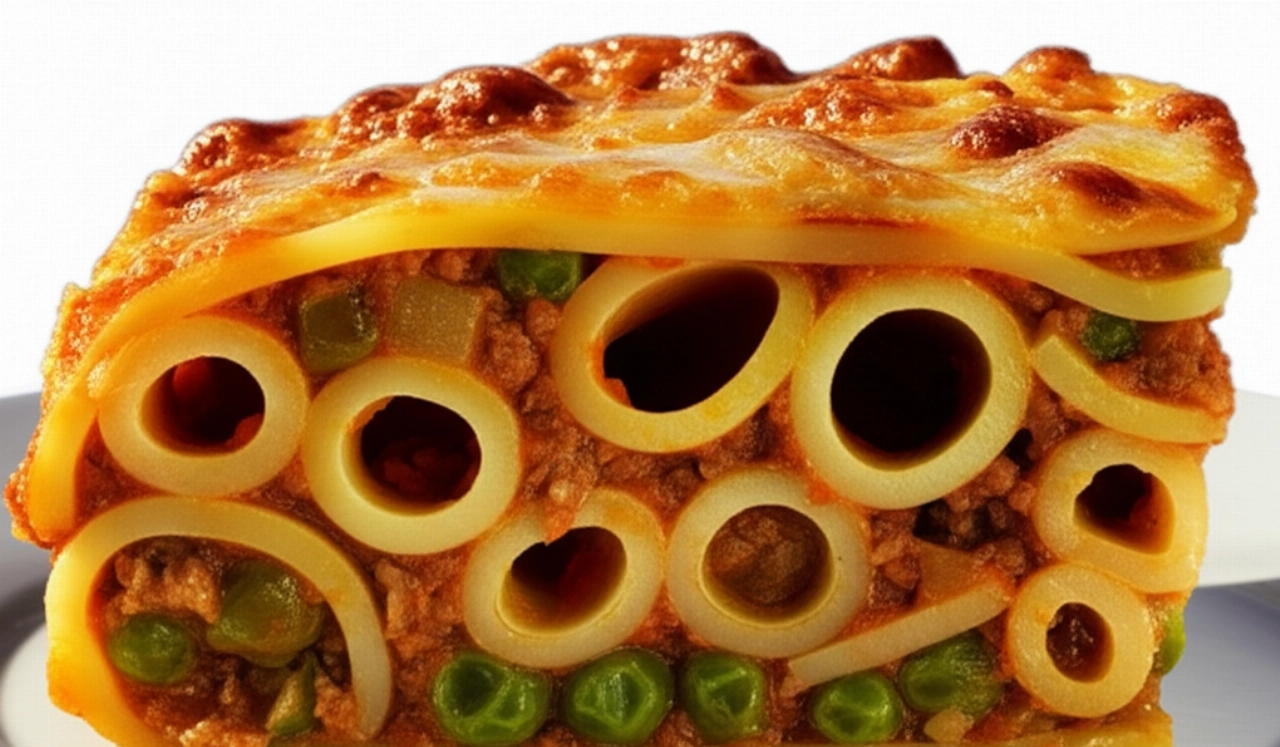
The 3 Mistakes Not to Make with Baked Anelletti (and How to Avoid Them)
I'm warning you about those small pitfalls that can compromise the final result. Learning from mistakes (others'!) is the best way to succeed.
- 1. Dry or Bland Ragù: The ragù is the soul of the anelletti. If it's too dry, the final dish will be too. The secret is slow cooking over low heat, with a lid that allows liquids to evaporate gradually but without drying out. Don't rush! And don't skimp on the soffritto and quality meat.
- 2. Overcooked or Sticky Pasta: Anelletti should be cooked 'al dente', or even a little less! Remember that they will finish cooking in the oven, absorbing the ragù's liquids. Drain them 2-3 minutes before the time indicated on the package. And never rinse them; the starch is precious for binding!
- 3. Cheese That Doesn't Melt or Burns: Caciocavallo or provola should be cubed, not grated, to create those 'pockets' of stringy cheese. Add them at the last moment, mixing gently, and cover the surface with breadcrumbs and a drizzle of oil for a perfect crust that won't burn.
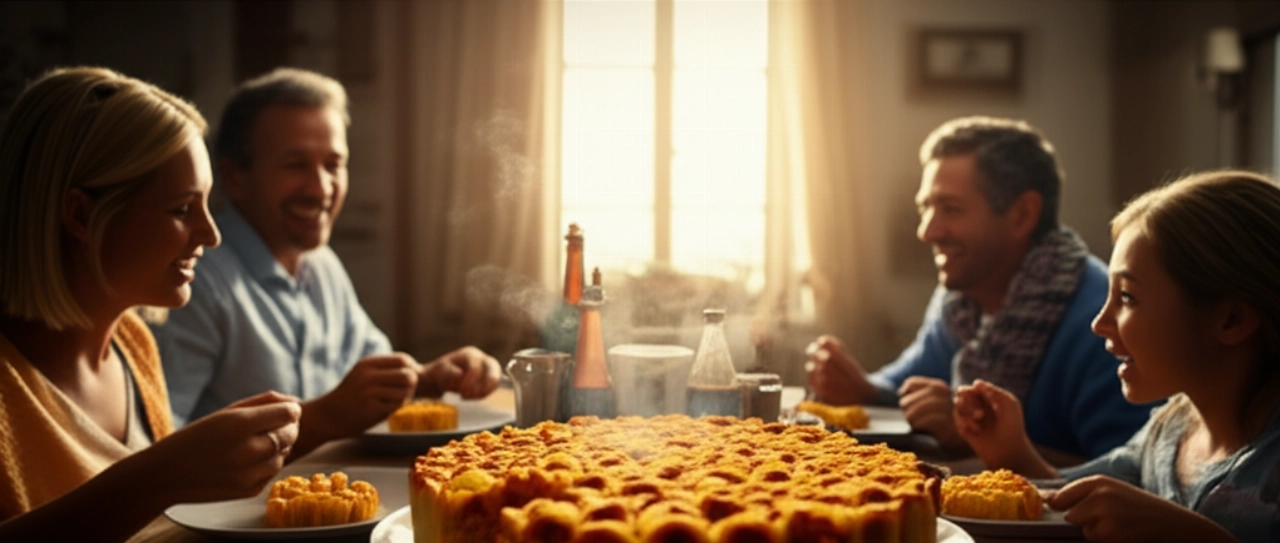
The Extra Touch: The Advice My Sicilian Grandma Passed Down to Me
My grandma, when preparing anelletti, had a very simple but brilliant trick: before baking, she would sprinkle the surface with a generous layer of toasted breadcrumbs and a drizzle of extra virgin olive oil. But the real secret was to add, between layers, a few spoonfuls of ragù without pasta, almost to 'moisten' the anelletti, to ensure that every bite was infused with flavor and never dry. This guaranteed incredible internal softness and moisture, with that crispy crust everyone loved. Try it, and you'll see the difference!
Let's Prepare Baked Anelletti Together: The Step-by-Step Guide
Ingredients (for 6-8 servings):
- 400 g Sicilian anelletti
- 500 g mixed ground meat (beef and pork)
- 700 ml quality tomato passata
- 1 medium onion
- 1 carrot
- 1 celery stalk
- 100 g peas (fresh or frozen)
- 200 g semi-aged caciocavallo or provola cheese
- 50 g grated Parmigiano Reggiano
- Extra virgin olive oil
- Salt and black pepper to taste
- Red wine (half a glass, optional)
- Breadcrumbs to taste
- 1 medium eggplant (optional)
- 2 hard-boiled eggs (optional)
Tools:
- A large pot for the ragù
- A pot for the pasta
- A frying pan for frying eggplant (if used)
- A baking dish (rectangular, approx. 20x30 cm)
Instructions:
- Prepare the Ragù, the Heart of the Dish:
- In a large pot, heat a generous drizzle of EVO oil.
- Finely chop onion, carrot, and celery for the soffritto. Add them to the oil and sauté over low heat for about 10 minutes, until soft and translucent. Don't let them burn!
- Add the ground meat and brown it over high heat, breaking it up well with a wooden spoon. It should change color and release its liquids.
- If using wine, deglaze with half a glass of red wine and let the alcohol evaporate completely.
- Pour in the tomato passata, season with salt and pepper. If the sauce seems too thick, you can add half a glass of hot water.
- Cover and simmer over very low heat for at least 1 and a half hours, preferably 2 hours, stirring occasionally. The longer it cooks, the more flavorful and thick it will be.
- Halfway through the ragù's cooking, add the peas. If using fried eggplant, add it only in the last 10 minutes of the ragù's cooking.
- At the end of cooking, the ragù should be thick and rich. Remove from heat and let it cool slightly.
- Prepare the Anelletti:
- Bring a large pot of salted water to a boil.
- Add the anelletti and cook them for about 2-3 minutes less than the time indicated on the package. They should be very al dente, almost crunchy.
- Drain the anelletti and immediately transfer them to a large bowl.
- Season them with a generous portion of the ragù (about 3/4) and mix well to combine. Add the grated Parmigiano and the cubed caciocavallo/provola. If using hard-boiled eggs, add them now, diced. Mix gently.
- Assemble the Baked Anelletti:
- Preheat the oven to 180°C (fan-assisted).
- Grease a baking dish well with oil and dust the bottom and sides with plenty of breadcrumbs. This will create a non-stick barrier and a delicious crust.
- Pour half of the seasoned anelletti into the baking dish and distribute them evenly.
- Create an intermediate layer with a few spoonfuls of the ragù you set aside. This is grandma's secret for a moist and flavorful core!
- Cover with the remaining anelletti.
- Sprinkle the surface with plenty of breadcrumbs and another drizzle of EVO oil. This will form the golden, crispy crust.
- Perfect Baking:
- Bake the anelletti in the preheated oven for about 25-30 minutes, or until the surface is well golden and crispy.
- If you see the surface browning too much, you can cover it with aluminum foil for the last few minutes.
- Once ready, remove from oven and let the anelletti rest for at least 10-15 minutes before cutting and serving. This will allow the cheese to set and the dish to firm up, preventing it from falling apart.
Tips and Frequently Asked Questions about Baked Anelletti
I've gathered the most common questions to give you all the answers you're looking for and clear up any doubts.
- Can I prepare Baked Anelletti in advance?
Absolutely! You can prepare the ragù even the day before; its flavor will benefit. You can assemble the baking dish with the anelletti and store it in the refrigerator (covered with plastic wrap) for up to 24 hours. Bake it directly from the fridge, adding 5-10 minutes to the cooking time. - How can I freeze Baked Anelletti?
You can freeze already cooked and portioned anelletti once they have completely cooled. Wrap the portions well in plastic wrap and then in aluminum foil. They can be stored in the freezer for about 2-3 months. To thaw, leave them in the refrigerator overnight and then reheat them in the oven or microwave. - Why are my Baked Anelletti dry?
There are several reasons: the ragù was too dry to begin with, the pasta was overcooked in water (absorbing less sauce in the oven), or you didn't add enough ragù during assembly. Remember grandma's trick of adding a few spoonfuls of pure ragù between the layers! - Can I use another type of cheese?
Certainly, if you can't find caciocavallo or provola, you can opt for scamorza, well-drained mozzarella (to prevent it from releasing too much water), or a mix of stringy cheeses. The flavor will be slightly different, but the result will still be delicious. - Can I make Baked Anelletti without meat?
Yes, you can prepare a vegetarian version using a lentil ragù or a mixed vegetable sauce (zucchini, carrots, eggplant, bell peppers) instead of meat. The cooking and assembly principle remains the same.
There you have it! Now you no longer just have a recipe, but all the secrets to bringing a dish to the table that tastes of home, tradition, and love: perfect Palermitan Baked Anelletti. A dish that will make you feel like a true guardian of Italian cuisine, just like your trusted chef grandma.
Don't be afraid to experiment. Every time you cook, put a piece of yourself into the dish. But with this solid foundation, you'll see that applause won't be lacking and your table will be a triumph of authentic flavors.
Have you tried our Baked Anelletti recipe? We're so curious to see your masterpiece! Leave a comment below, tell us how it went, or share a photo on Instagram tagging @SearchRecipes. If you loved this journey into Sicilian cuisine, you can't miss our recipe for Original Sicilian Arancine or for an equally iconic first course like Authentic Pasta alla Norma. Keep cooking with love, and see you soon!
